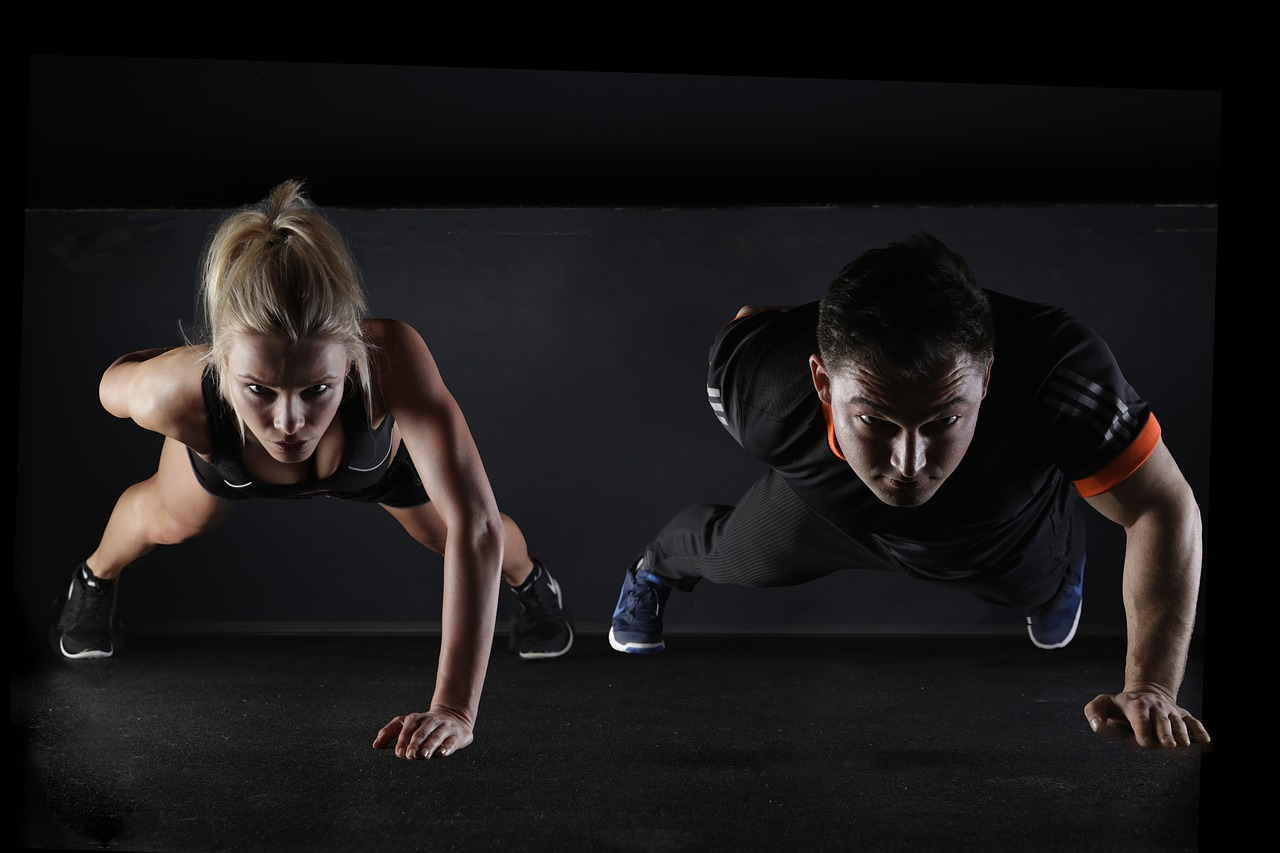How Hard Should I Work Out to Build Muscle? An In-depth Understanding
Navigating your way through the fitness world can be a daunting task, and one of the most common queries is about the right intensity of workout needed to build muscle. It’s in your quest for a fitter body and improved physical strength that this piece becomes relevant. This article, ‘How Hard Should I Work Out to Build Muscle? An In-depth Understanding’ offers in-depth insights into the whys and hows of muscle building. Providing answers to your frequent inquiries, it reveals the delicate balance between working out too hard and not enough, all in the pursuit of that toned and sculpted physique you’ve been aiming for.
Understanding Muscle Building
Building muscle isn’t just about pumping heavy iron in the gym. It’s a delicate dance of several elements that when performed in harmony, leads to muscle growth and development. To fully grasp this unique physiological phenomenon, let’s break it down into its essential components.
Basics of Muscle Growth
When you work out, you’re essentially creating tiny tears (micro-trauma) in your muscle fibers. But don’t worry, this is a good thing. Your body responds by repairing these micro-tears and in the process, muscle fibers grow thicker and stronger – this is known as hypertrophy. The key to achieving this continuous muscle growth is by regularly challenging your muscles with more load or volume.
Relation between Exercise Intensity and Muscle Building
Exercise intensity is fundamental to muscle building. When we talk of intensity in this context, we mean the amount of effort you’re putting into each set of your workout. This can be measured as a percentage of your one repetition maximum (1RM), the maximum amount of weight you can lift for one repetition of a particular exercise. The higher the intensity, the greater the stress on the muscle, leading to more micro-tears and thus, more potential for growth during the repair process.
Importance of Protein Synthesis in Muscle Building
When it comes to muscle growth, protein synthesis is the MVP. It’s the biological process where cells build new proteins. When you train, the rate of protein synthesis increases in your muscle fibers leading to muscle growth. But for that to happen, you need a protein-rich diet to supply the necessary building blocks, or amino acids, for this synthesis to occur.
Types of Work Outs and Muscle Building
A diverse workout routine that incorporates several types of workouts is beneficial in muscle building. They target different muscle groups, spur metabolic changes, and keep your workouts challenging and interesting.
Resistance Training
Resistance training (like weight lifting) is the cornerstone of any muscle building program. By continually challenging your muscles with weights or other forms of resistance, you cause the aforementioned micro-tears that lead to muscle growth during the repair process. It’s crucial to increase the weight or resistance progressively to spur ongoing muscle growth.
High-Intensity Interval Training (HIIT)
HIIT workouts can also contribute to muscle building. These short, intense bursts of activity followed by short rest periods can help improve cardiovascular health, increase metabolism and can stimulate muscle growth, especially when combined with resistance exercises.
Cardiovascular Exercise and Muscle Building
While cardio is often associated with weight loss rather than muscle building, it still plays an important role. It helps to burn fat, improving muscle definition. Also, an efficient cardiovascular system supports harder and longer workouts.
Balance between Different Types of Workouts
The key is to find a balance between these workout types. Too much of one can hinder the benefits of another. For example, excessive cardio could potentially use up the energy needed for repair and growth of your muscles. Hence, a well-rounded program that incorporates different workouts is the ideal approach.

Determining the Right Work Out Intensity
Understanding how hard you should be working out is essential for muscle growth.
Understanding Your Body’s Signals
Your body has a way of guiding you about the intensity level. Feeling a burning sensation in your muscles or fatigue by the end of your set is a good sign that you’re working at an appropriate intensity.
Individual Fitness Levels and Goals
There’s no one-size-fits-all approach to workout intensity. It depends on your current fitness level and what you aim to achieve. If you’re a beginner, you may need to start at a lower intensity and progressively work your way up.
Consulting with Fitness Professionals
Getting professional advice can be extremely helpful in determining your workout intensity. A qualified fitness professional can not only guide you with the correct form and technique, but they can also design a personalized program keeping in view your individual strengths, weaknesses and objectives.
Using Heart Rate as a Guide
Your heart rate can be a good indicator of your workout intensity. Higher intensity workouts will result in a higher heart rate. A heart rate monitor could be a valuable tool to provide a more objective measure of intensity.
Volume, Frequency and Duration of Workouts for Muscle Building
Recommended Workout Volume for Muscle Growth
Workout volume is the total amount of work you do, typically calculated as sets multiply by reps multiply by weight. Higher volume workouts (within reason) can stimulate greater muscle growth. However, it’s essential to gradually increase your volume to avoid overtraining.
Impact of Frequency on Muscle Building
The frequency with which you work out each muscle group also matters. Studies suggest that training each muscle group two to three times per week is optimal for muscle growth.
Ideal Duration of Each Training Session
Your workout duration can also play a role. Staying at the gym for hours on end might not be beneficial as diminishing returns can step in. An optimal range is often considered to be between 45-60 minutes for a training session.

Understanding Progressive Overload Principle
Definition of Progressive Overload
In essence, progressive overload is the principle of continually increasing the demands on the musculoskeletal system to stimulate muscle growth. This could be through increasing the weight, the number of repetitions or sets, or the frequency of your workouts.
Role of Progressive Overload in Muscle Building
Progressive overload is crucial for muscle building because your body adapts to the stress that you place on it. If you lift the same amount of weight for the same number of repetitions over time, your muscle growth will plateau.
Practical Tips for Incorporating Progressive Overload
Begin by gradually increasing the weights you’re lifting. However, never compromise on form. Sometimes doing more reps or reducing your rest time while maintaining the same weight can also be an effective way of achieving progressive overload.
The Role of Recovery in Muscle Building
Importance of Rest and Recovery
Don’t underestimate the power of rest. Your muscles need time to repair and grow after a workout. Continually straining your muscles without giving them time to recover can lead to overtraining and, ultimately, to injuries.
Rest Periods Between Work Out Sessions
Depending on the intensity and volume of your workout, you might need a day or more of rest in between training sessions for each muscle group. This gives your muscles a chance to rebuild and grow stronger.
Active vs Passive Recovery Methods
Active recovery involves light exercise on your non-workout days, and passive recovery involves complete rest. Both are essential in a well-rounded program. Active recovery can help speed up the healing process by stimulating blood flow to the muscles, while passive recovery allows your body to fully rest and recharge.

Nutrition and Muscle Building
Boosting Protein Intake for Muscle Growth
Muscles are basically made of protein, so it’s crucial to consume enough protein to support muscle repair and growth. Aim for a balanced diet with a good amount of lean protein from sources like chicken, fish, eggs, and beans.
Role of Carbohydrates and Fats in Muscle Building
Carbohydrates are your body’s main source of energy, and fats are essential for hormone production. Both play essential roles in supporting your workouts and overall health, so make sure your diet includes a balanced amount of these macronutrients.
Importance of Hydration During Exercise
Staying hydrated is crucial during exercise as it affects your body’s ability to regulate heat and helps transport nutrients to give you energy and keep you healthy.
Common Misconceptions about Muscle Building
There are plenty of myths swirling about muscle building. Let’s get a few things straight.
Myths and Truth about High-intensity Workouts
One common myth is that you always need to work out at high intensities for muscle growth. While intense workouts can indeed stimulate muscle growth, moderation is key. Overdoing it can lead to overtraining and injuries.
Misunderstandings about Muscle Soreness
Another misconception is that if you’re not sore after a workout, it wasn’t effective enough. Muscle soreness is not necessarily a sign of an effective workout. It’s simply an indicator that you’ve stressed your muscles in a novel way.
Factual Information about Protein Supplements and Muscle Building
There’s also a belief that protein supplements are essential for muscle building. While they can be helpful if your diet lacks protein, it’s entirely possible to build muscle with a protein-rich diet.

Proper Form and Technique in Muscle Building Exercises
Importance of Correct Form in Muscle Growth
A proper technique is vital to ensure that you’re effectively targeting the right muscle groups and not risking injury. It also allows you to lift more weight or do more repetitions, resulting in better muscle growth.
Tips for Achieving Right Exercise Techniques
Begin with lighter weights to master the form, then gradually increase the weight as you gain confidence. If unsure, don’t hesitate to ask a fitness professional for guidance.
Risks Associated with Poor Form and How to Avoid Them
Poor form can lead to sprains, strains and other injuries. To avoid this, always warm up, start with weights that you can manage, prioritize form over weight, and don’t ignore pain – it’s your body’s way of telling you that something is wrong.
FAQs about Muscle Building
Do You Need to Lift Heavy Weights for Muscle Building?
Lifting heavy weights can certainly help, but it’s not the only way. You can also build muscle with lighter weights, provided you’re doing enough repetitions to fatigue your muscles.
Should You Work Out Everyday for Muscle Growth?
Overtraining can actually hinder muscle growth. Recovery is key. It’s often recommended to exercise each muscle group two to three times per week.
What are the Effective Muscle-building Exercises for Beginners?
Exercises like squats, push-ups, lunges, and deadlifts are fantastic for beginners as they work multiple muscle groups at once.
Is There a Specific Diet for Muscle Building?
While there’s no one-size-fits-all diet, a protein-rich diet with a balance of carbohydrates and fats can support muscle building. Additionally, staying hydrated and providing your body with enough fuel before and after workouts is crucial.
In conclusion, muscle building is a multi-faceted process that goes far beyond lifting weights. It involves a balanced workout regime, proper nutrition, sufficient recovery, and a lot of patience and perseverance. Be consistent and listen to your body, and you’ll see the results you desire. It’s a journey, not a race. Enjoy the process, and the rewards will follow.

